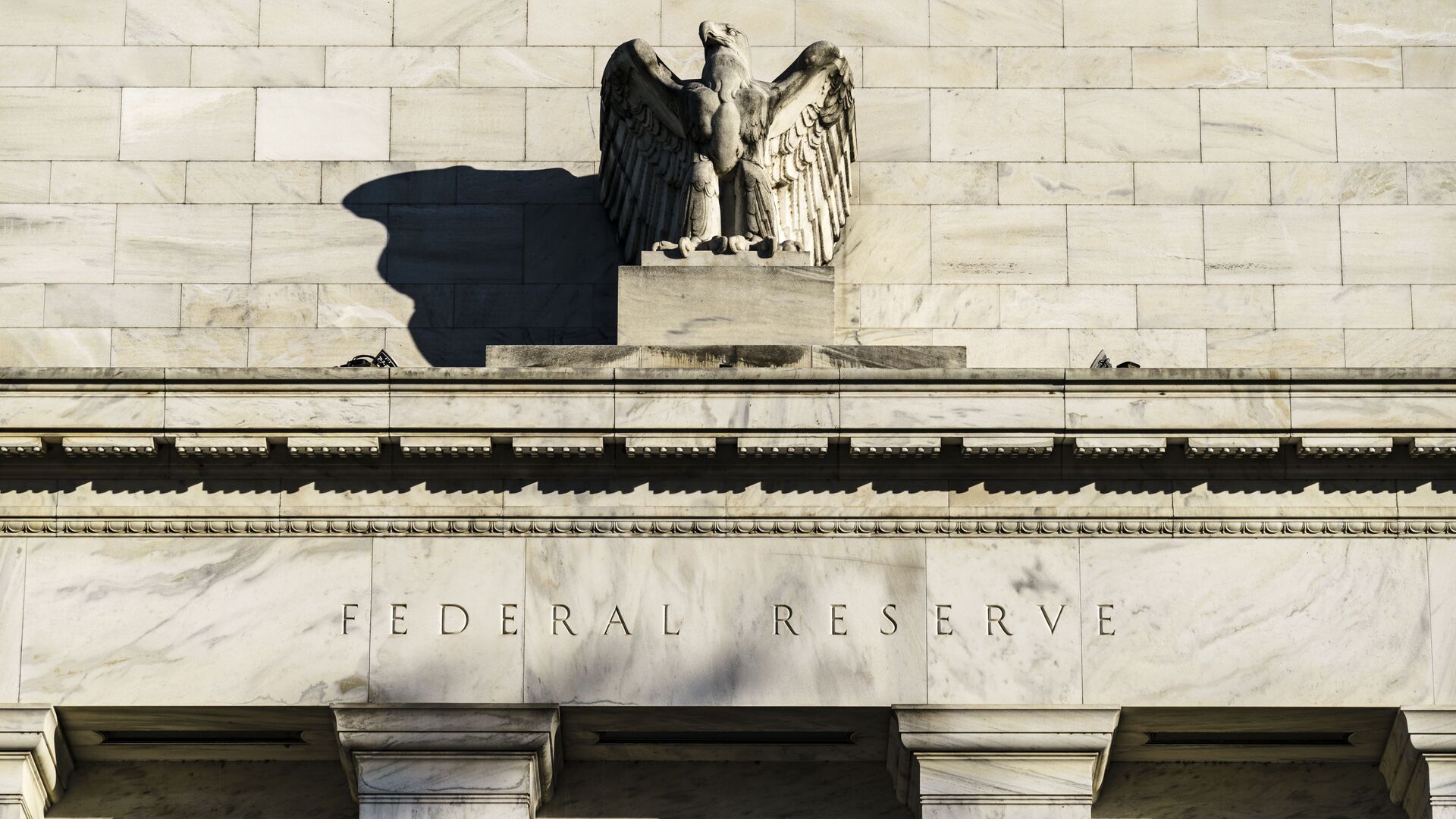https://sputnikglobe.com/20211013/fed-stimulus-taper-could-start-nov-dec-central-bank-confirms-in-monthly-meeting-minutes-1089902372.html
Fed Stimulus Taper Could Start Nov-Dec, Central Bank Confirms in Monthly Meeting Minutes
Fed Stimulus Taper Could Start Nov-Dec, Central Bank Confirms in Monthly Meeting Minutes
Sputnik International
WASHINGTON (Sputnik) - The much-anticipated tapering of the Federal Reserve’s long-running COVID-19 economic stimulus could start by November or December and... 13.10.2021, Sputnik International
2021-10-13T19:52+0000
2021-10-13T19:52+0000
2021-10-13T19:51+0000
central bank
us
markets
federal reserve
global market
https://cdn1.img.sputnikglobe.com/img/07e4/0b/11/1081197312_0:160:3073:1888_1920x0_80_0_0_1b91ce6990f29abb8d69545282f3a03b.jpg
"Regarding the outlook for monetary policy, market participants noted policymaker communications suggesting that tapering of asset purchases could begin this year and end by mid-2022," the Fed said, releasing the minutes of the September meeting held by its Federal Open Market Committee (FOMC).The central bank said around half of the US bond dealers and other market participants it surveyed prior to the meeting viewed "December as the most likely timing of the first reduction in the net pace of purchases, although respondents also attached significant probability to the first reduction coming in November."The potential timing of the Fed’s stimulus taper and eventual interest rate hike has kept US — and to an extent, global — markets on tenterhooks for months. Since the first major outbreak of the coronavirus in March 2020, the central bank has allocated $120 billion each month to buy bonds and other assets as a form of support for the economy.The Fed has also kept interest rates at between zero and 0.25% for almost 20 months now.The joint actions indeed put a floor beneath the economy but the price for that has been soaring inflation.Consumer prices in the United States, as measured by the CPI Index, rose by 5.4% in the year to September, the Labor Department reported on Wednesday, as rallying commodity markets from oil to coffee kept the pressure up on the world’s largest economy.The Fed’s preferred gauge for inflation - the core Personal Consumption Expenditures Index, which excludes volatile food and energy prices - rose 3.6% in the year through July, its most since 1991. The PCE Index including energy and food rose 4.2% year-on-year.The Fed’s own target for inflation is just 2% per year, putting the current CPI and PCE readings way above the central bank’s expectations.Fed Chair Jay Powell and a coterie of FOMC officials have, however, taken to call the current inflationary trend as "transitory" though other members of the policy-making committee dispute the notion and have called for tougher action against inflation. Powell concurred last month that the Fed’s asset purchases had been integral to rescuing the economy "but we can’t keep doing them forever."Besides the United States, most developed economies are under rising price pressure as bottlenecks in their transportation and other logistical infrastructure caused by unemployment and inactivity during the height of the COVID-19 outbreak result in higher costs now for moving goods through supply chains.
https://sputnikglobe.com/20210924/us-stocks-eke-out-steady-finish-to-volatile-week-after-federal-reserve-stimulus-taper-plan-1089386196.html
Sputnik International
feedback@sputniknews.com
+74956456601
MIA „Rossiya Segodnya“
2021
Sputnik International
feedback@sputniknews.com
+74956456601
MIA „Rossiya Segodnya“
News
en_EN
Sputnik International
feedback@sputniknews.com
+74956456601
MIA „Rossiya Segodnya“
Sputnik International
feedback@sputniknews.com
+74956456601
MIA „Rossiya Segodnya“
central bank, us, markets, federal reserve, global market
central bank, us, markets, federal reserve, global market
Fed Stimulus Taper Could Start Nov-Dec, Central Bank Confirms in Monthly Meeting Minutes
WASHINGTON (Sputnik) - The much-anticipated tapering of the Federal Reserve’s long-running COVID-19 economic stimulus could start by November or December and conclude by the middle of next year, minutes from the latest monthly meeting of the central bank’s policy-making committee said Wednesday.
"Regarding the outlook for monetary policy, market participants noted policymaker communications suggesting that tapering of asset purchases could begin this year and end by mid-2022," the Fed said, releasing the minutes of the September meeting held by its Federal Open Market Committee (FOMC).
The central bank said around half of the US bond dealers and other market participants it surveyed prior to the meeting viewed "December as the most likely timing of the first reduction in the net pace of purchases, although respondents also attached significant probability to the first reduction coming in November."
The potential timing of the Fed’s stimulus taper and eventual interest rate hike has kept US — and to an extent, global — markets on tenterhooks for months. Since the first major outbreak of the coronavirus in March 2020, the central bank has allocated $120 billion each month to buy bonds and other assets as a form of support for the economy.
The Fed has also kept interest rates at between zero and 0.25% for almost 20 months now.

24 September 2021, 22:30 GMT
The joint actions indeed put a floor beneath the economy but the price for that has been soaring inflation.
Consumer prices in the United States, as measured by the CPI Index, rose by 5.4% in the year to September, the Labor Department reported on Wednesday, as rallying commodity markets from oil to coffee kept the pressure up on the world’s largest economy.
The Fed’s preferred gauge for inflation - the core Personal Consumption Expenditures Index, which excludes volatile food and energy prices - rose 3.6% in the year through July, its most since 1991. The PCE Index including energy and food rose 4.2% year-on-year.
The Fed’s own target for inflation is just 2% per year, putting the current CPI and PCE readings way above the central bank’s expectations.
Fed Chair Jay Powell and a coterie of FOMC officials have, however, taken to call the current inflationary trend as "transitory" though other members of the policy-making committee dispute the notion and have called for tougher action against inflation. Powell concurred last month that the Fed’s asset purchases had been integral to rescuing the economy "but we can’t keep doing them forever."
Besides the United States, most developed economies are under rising price pressure as bottlenecks in their transportation and other logistical infrastructure caused by unemployment and inactivity during the height of the COVID-19 outbreak result in higher costs now for moving goods through supply chains.


